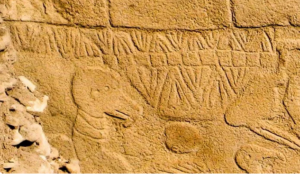Researchers at Turkey’s Göbekli Tepe, a site predating the Great Pyramid of Giza by 7,000 years, have uncovered carvings that may depict an ancient comet strike, potentially linked to a significant shift in human civilization. These carvings suggest that the nearly 12,000-year-old site, considered the world’s oldest place of worship, might also represent the earliest known solar calendar. The intricate symbols on the site’s pillars could record an astronomical event, possibly a comet impact, that devastated the region and spurred the development of agriculture and new religious practices.
The researchers identified V-shaped symbols on the pillars, which they believe represent days in a solar calendar. By counting these symbols, they mapped out a 365-day year, including 12 lunar months and 11 additional days. Some symbols also appear to mark the summer solstice, indicating the site may feature the earliest known “lunisolar calendar.” This dual depiction of lunar and solar cycles predates other known calendars by millennia and reflects the advanced astronomical understanding of Göbekli Tepe’s inhabitants.
The carvings may also commemorate a catastrophic comet strike around 10,850 BC, which could have caused a mini-ice age and driven the shift from hunter-gatherer societies to agriculture. This event might have led to the rise of a new religion and cemented Göbekli Tepe’s significance for millennia. The findings also support the theory that Earth’s orbit increases its risk of comet impacts, which are typically observed as meteor streams.
Ask me anything
Explore related questions





